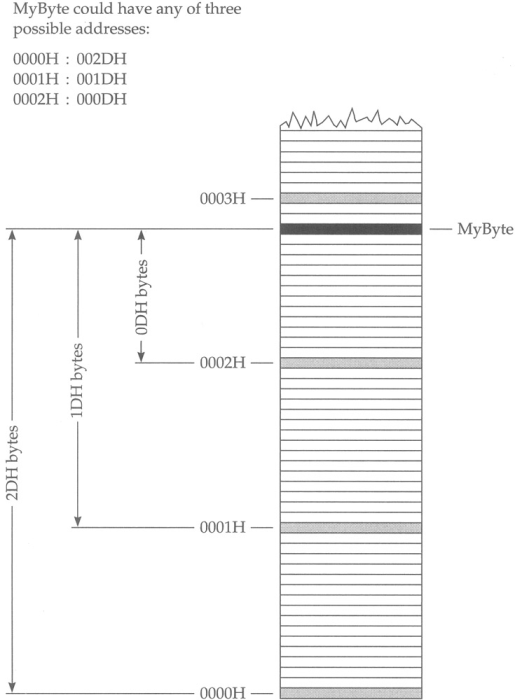A demonstration on how to set the CPU in "un-real mode" and access the linear frame buffer of the video card (requires VBE 2.0 or higher compatibility) to draw a gradient while still being in real-mode.
Short answer
Just for fun, by an old DOS programmer.
Long answer
To anyone who's unfamiliar with PC history, accessing 4GB of flat memory in real-mode doesn't sound
like a big deal. So here follows a short history lesson of struggles of legacy PC programming, Up until
the mid 90s DOS was quite common still. Real-mode DOS ran in a horrendous memory model where data and
code were addressed using a segment and an offset. Within each segment you could address 64KB of data
using the offset 0000:ffffh, however, the segments were also overlapping every 16 bytes (paragraph).
As illustrated by the figure below.

[Courtesy of CIS-77 course at Bristol Community College ]
Using this segmented model you could in total access 1MB (out of which you could get to use ~620KB at best) of memory in a very convoluted way. To access any more than that you had to use hardware that could bank its memory in the sub 1MB area (i.e VESA Bios Extensions)... or by using and Expanded Memory Emulator (EMS).
Those were the struggles faced by DOS programmers. On a 386 or better, it was/is even possible to use a 32 bit register as offset as demonstrated below.
push word 0a000h
pop es
xor edi, edi
.loop:
mov al, es:edi
inc edi
cmp edi, 0ffffh
jl .loopAs long as your offset is within the range 0000:ffffh, anything above that will cause
general protection fault. Un-real
mode/big real mode hacks the CPU to let us use any offset between 0-4GB without having to run
actual 32-bit code in protected mode. Thereby letting us access the VBE linear frame buffer (usually > 2GB+)
and everything else that was never possible in real mode DOS.
Any real-mode DOS programs/tools will (probably) still work without any issues. Such as QuickBasic, Turbo Pascal and what not.
- Won't work under V86 mode. That includes
- If an EMS emulator is loaded
- Running it directly from Windows. Although, 64-bit windows doesn't support Virtual DOS Machine (VDM) anyways...
- Instructions such as rep movs/stos only use 16 bit offsets in real mode.
For convenience gradient.asm is written in MASM syntax but is easy to port to NASM/FASM.
To compile (using MASM 6.11 or higher)
ml gradient.asm
The most convenient way to run is likely through DOSBox. To launch in the DOS command prompt, type
gradient.com
You should see the following output
